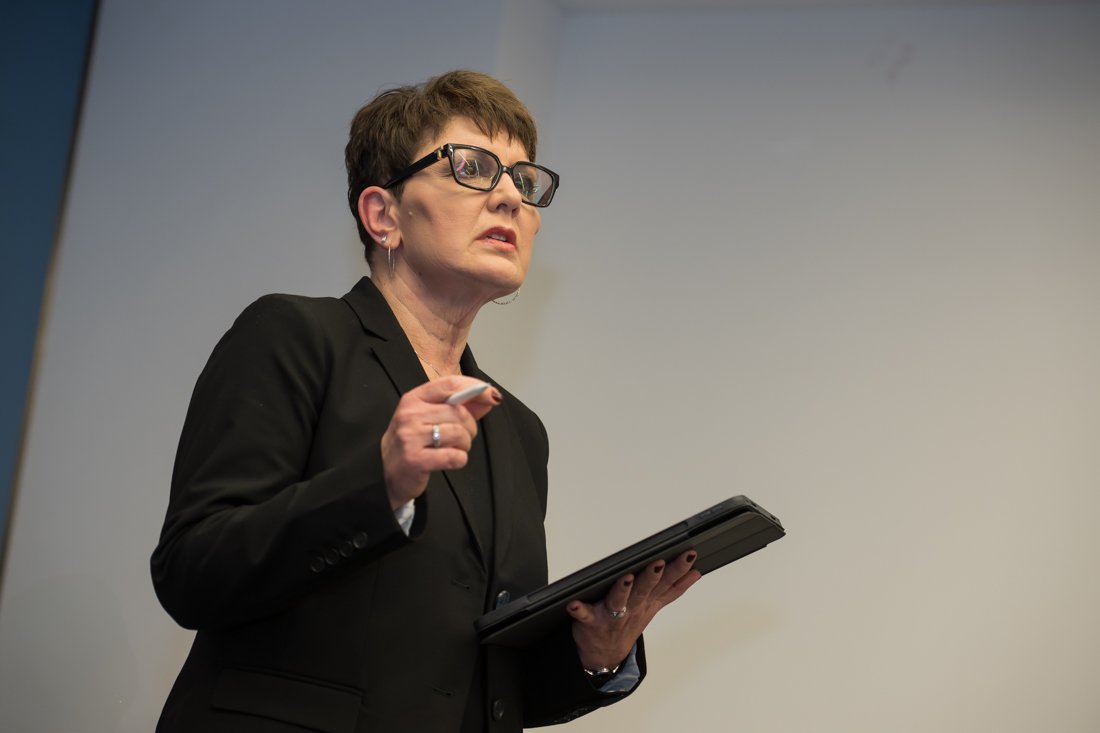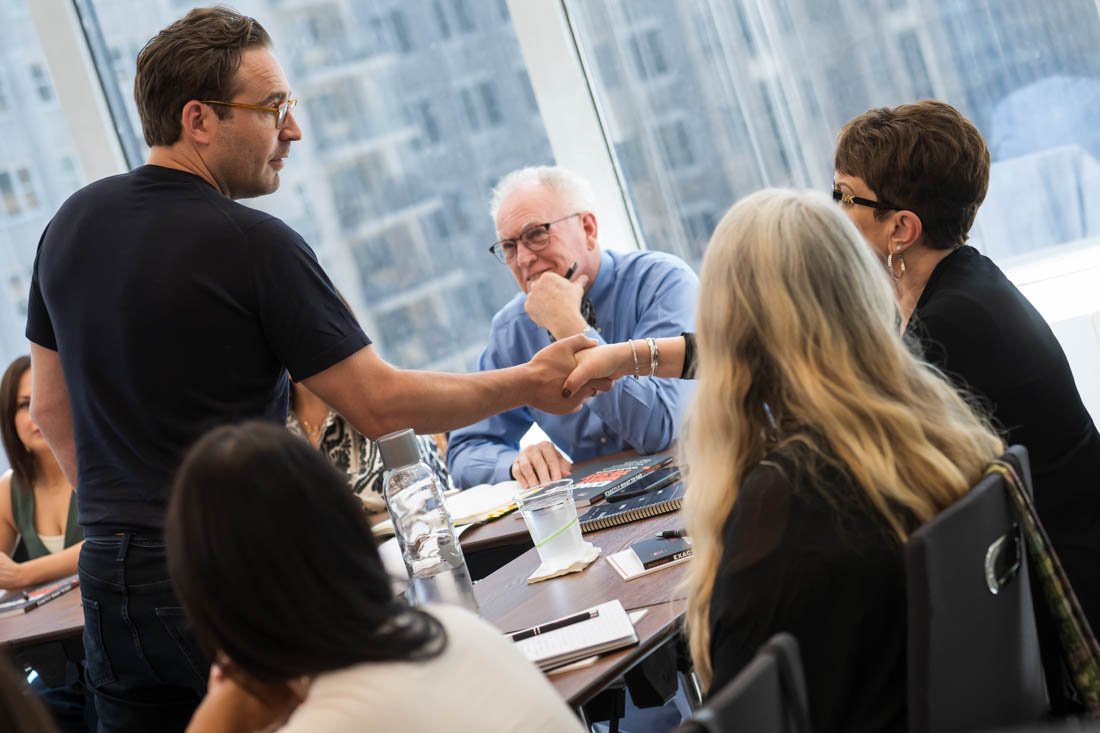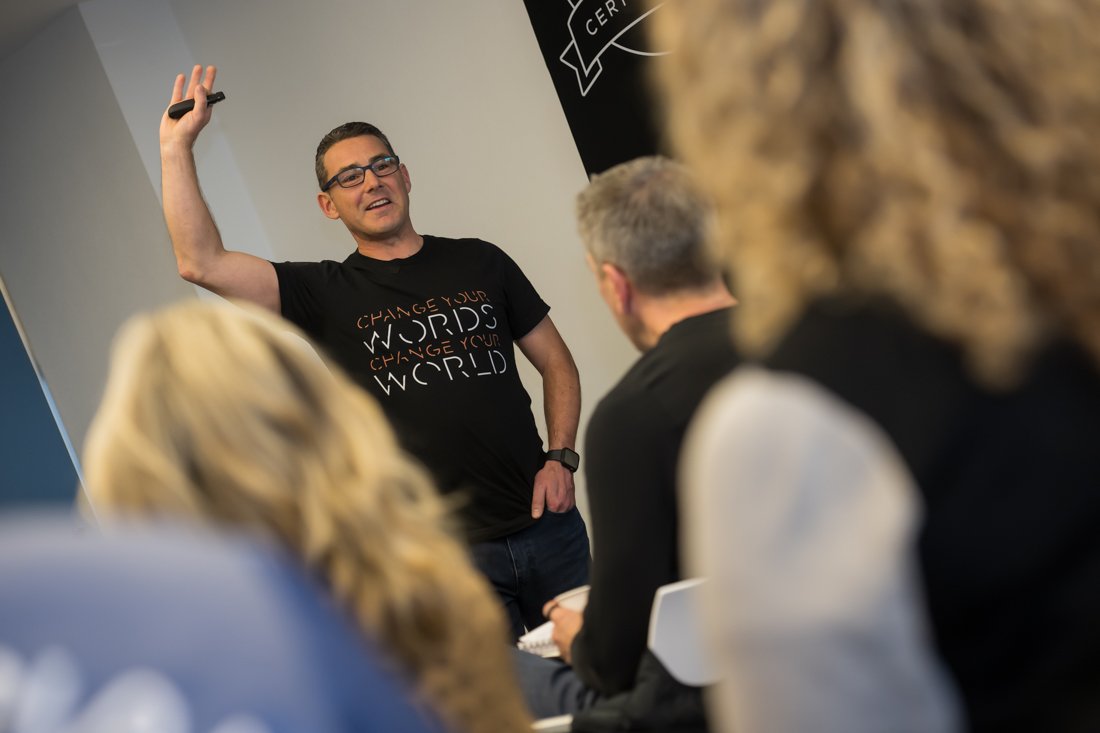Open enrollment events can be a powerful way to engage with your target audience, but attracting the right people requires more than just flashy ads. It takes strategy, empathy, and intentional positioning. Instead of relying on social media hype or pushing generic offers, focus on understanding your audience’s challenges and offering real, tangible solutions.
In my role as the Head of Learning and Development for Exactly What to Say®, I’ve spent the last two years supporting speakers, trainers, writers and coaches in making their message land in the most effective way possible. Whether it’s through onboarding new Guides, creating engaging content, or developing learning resources, my focus is on helping others confidently communicate their value.
Through working with some of the best in the industry, I’ve seen firsthand what works and what doesn’t when it comes to filling seats at open enrollment events. Here’s what I’ve learned:
1. Positioning Your Event with Purpose
One of the biggest mistakes I see people make is promoting an event without real intentionality. Slapping the words “Exactly What to Say Training” on an event title might work for those already familiar with the brand, but for new audiences, it’s far more effective to speak directly to a problem they’re facing.
Instead of saying, “Join our persuasive communication workshop,” try something like:
- “Learn How to Defend Your Value Proposition in a Highly Competitive Market.”
- “Master the Art of Overcoming the Most Common Objections in Your Industry.”
This small shift changes the conversation. You’re no longer selling an event, you’re solving a problem.
2. Demonstrating Empathy: Show You Understand Their Problem
The quickest way to build trust with your audience is to demonstrate that you get them. When someone reads about your event, they should immediately think, “That’s exactly what I need right now.”
The key here is to focus on their challenges, not your solution. If you talk about your training, your framework, and your process too soon, people instinctively push back. But if you start with their pain points, they’ll lean in.
Think about it this way: if you show people that you understand their problem, they’ll trust your solution. Try to sell them on your solution first, and they’ll work to convince themselves they don’t need it.
3. Avoid Gimmicks—Go for Authenticity
If you’ve ever seen an ad that promises “Attend this $99 event and become a millionaire in a weekend!”, you already know that social media ads can be noisy. While they might generate leads, they often attract people looking for quick fixes, which rarely translates into meaningful engagement.
Rather than pouring resources into broad, hope-based advertising, focus on consistent, strategic visibility through high-trust channels.
4. Proactive Promotion: Be Consistent and Visible
At Exactly What to Say®, we talk about the importance of being intentional with your words. The same applies to how you show up in front of your audience. Instead of just throwing out event promotions, think about how you can consistently add value and build credibility over time.
Here are a few approaches I recommend to the Certified Guides I coach:
- Be a guest on relevant platforms – Speak on podcasts, Facebook groups, or LinkedIn Live events to share your expertise and build trust before asking for sign-ups.
- Run complementary webinars – Hosting a free event on a related topic can naturally lead people toward your main event.
- Leverage strategic partnerships – Collaborate with others who already have an audience that aligns with your event.
- Invest in strong visuals – A graphic recorder or compelling visual content can make your event stand out and create shareable content for future promotions.
5. Leverage Scarcity and Urgency
People tend to act when there’s a compelling reason to do so now. But scarcity should be genuine—not a gimmick. Consider offering:
Limited spots: “Only 10 seats available—secure yours today!”
Exclusive discounts: “Only 3 discount codes left—first come, first served!”
Time-sensitive bonuses: “Register before Friday and get access to an exclusive bonus session!”
These create a natural incentive for people to take action rather than procrastinate.
6. Direct Outreach: Personal Invitations Matter
One of the most effective strategies I recommend to Guides is direct outreach to their existing network. Instead of waiting for people to stumble upon your event, personally invite those who would benefit most.
Start by creating a Top 20 List, a shortlist of people who fit your ideal attendee profile. Reach out personally with a message that isn’t just about selling, but about showing you’re thinking of them:
“I am putting together this training event and immediately thought of you. I’m not sure if it’s for you, but… [mention why it’s relevant].”
This small act makes people feel seen, and when people feel seen, they’re far more likely to engage.
7. Offer Value Upfront
One of the best ways to create demand for your event is to give value before asking for anything in return. This could be in the form of:
Free training content that leaves people wanting more.
A compelling article that establishes credibility.
A short video with a practical tip tied to your event topic.
When people experience the value of your insights before the event, they’re more likely to sign up because they’ve already learned from you.
8. Use Language That Opens Conversations
At Exactly What to Say®, we teach that the words you choose shape the responses you get. When inviting someone to an event, try these open-ended conversation starters:
“Who do you know who would benefit from this?” – A non-direct way to ask for referrals without putting pressure on the individual.
“I’m not sure if this is for you, but…” – A gentle way to introduce an opportunity without making it feel like a sales pitch.
Trust, Relevance, and Empathy Win Every Time
Leading successful open enrollment events is not about blasting promotions everywhere and hoping people sign up. It’s about:
- Positioning your event around the problems your audience cares about.
- Demonstrating empathy by showing you understand their challenges.
- Building credibility through consistency and visibility.
- Making it easy to say yes through direct outreach, clear messaging, and strategic urgency.
If you’re looking to make your next open enrollment event a success, start by asking yourself:
“How can I show my audience that I truly understand their problem and offer a solution they trust?”
When you lead with empathy, clarity, and value, the right people won’t just show up, they’ll stay engaged and ready to take action.








